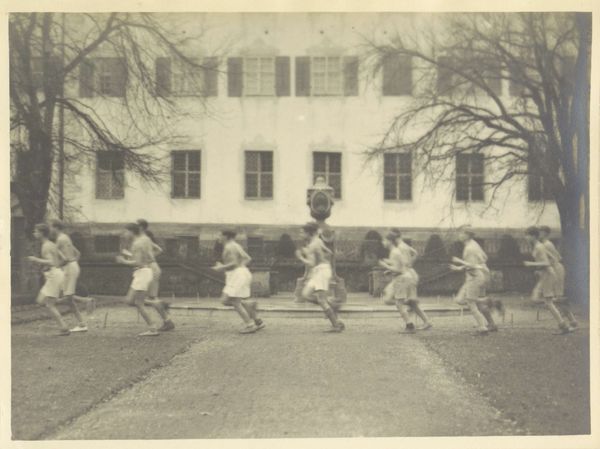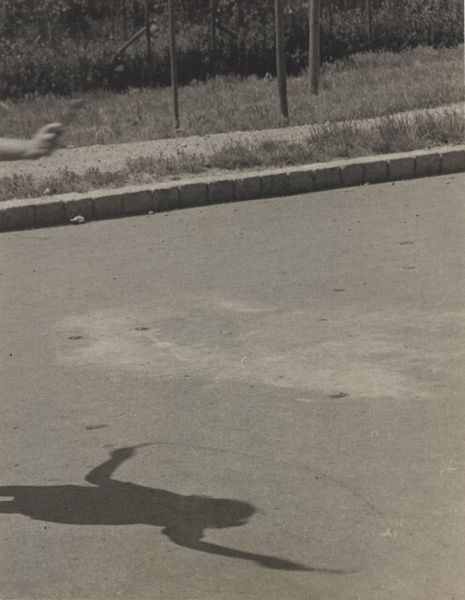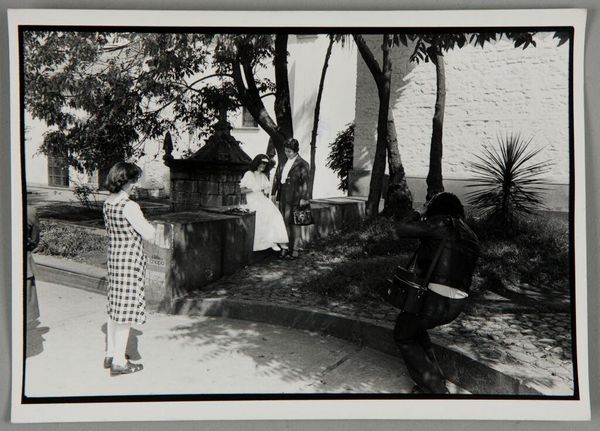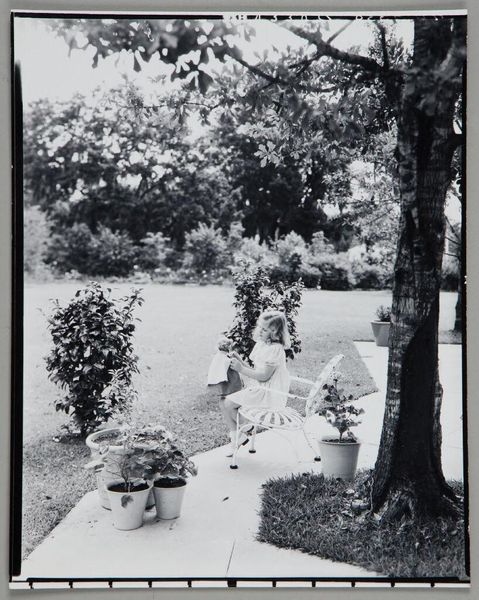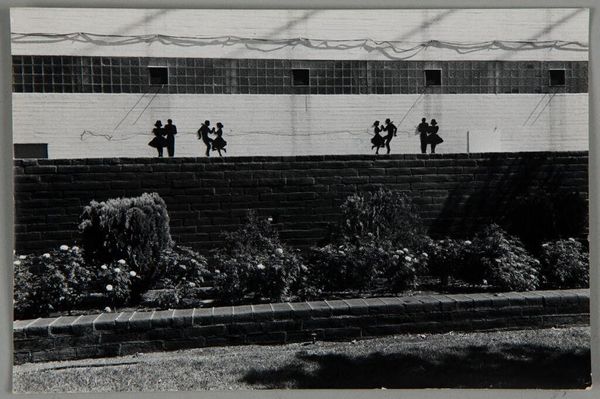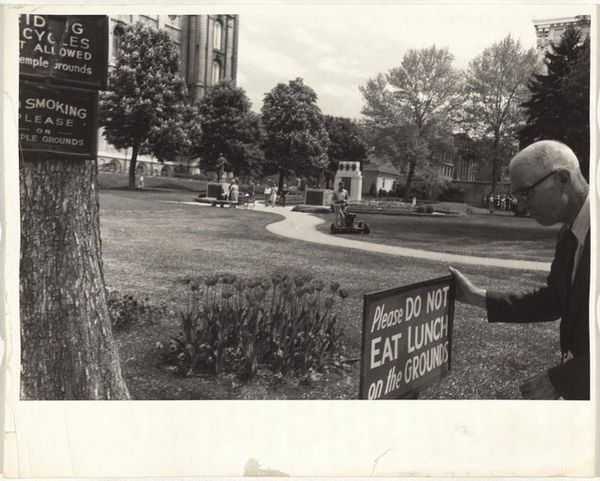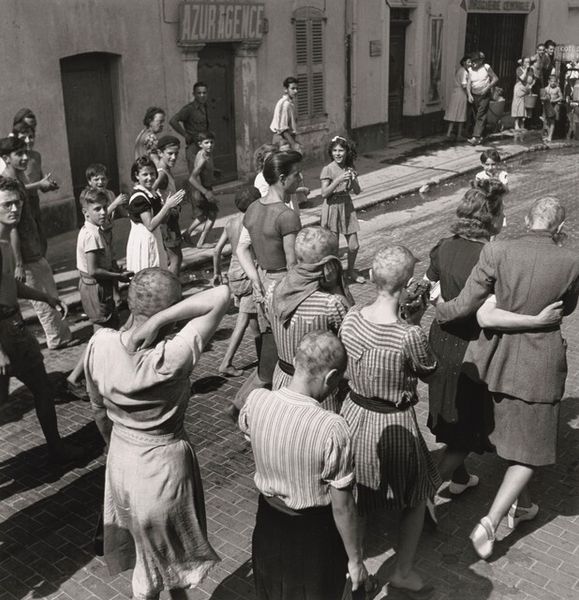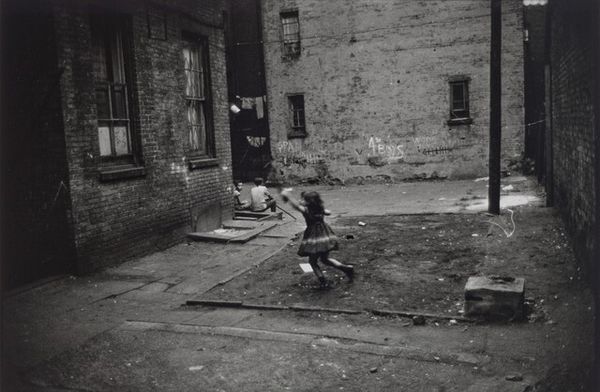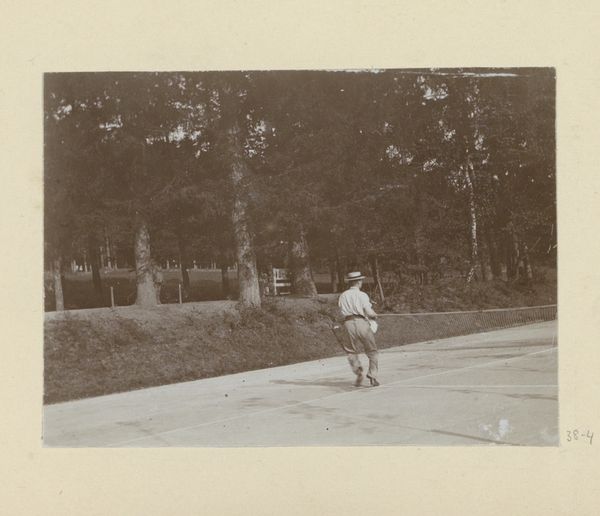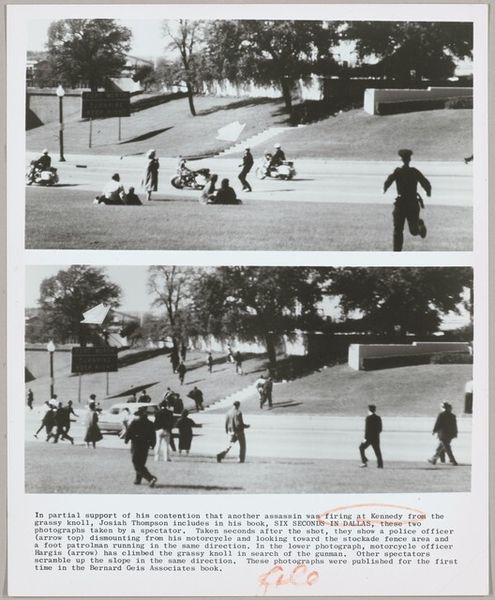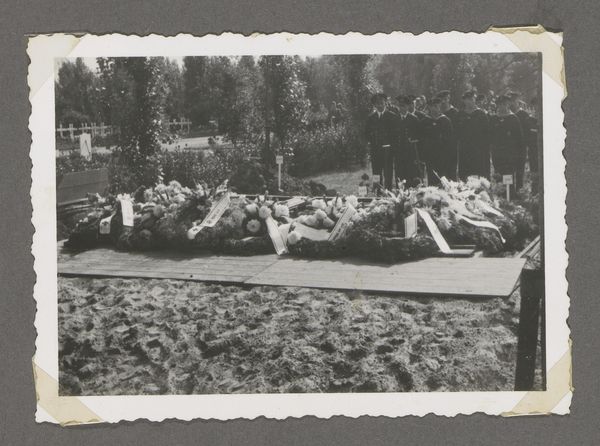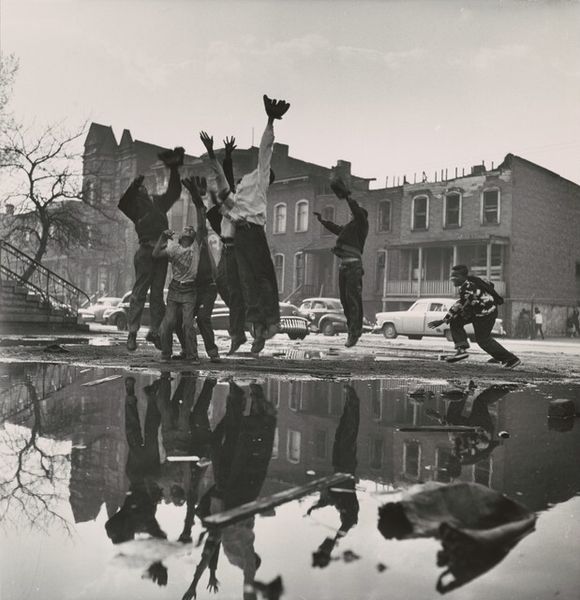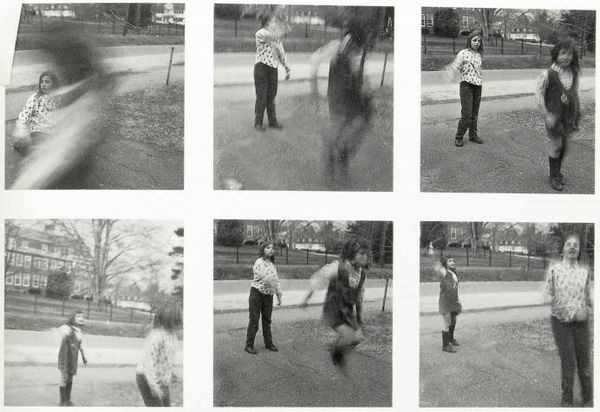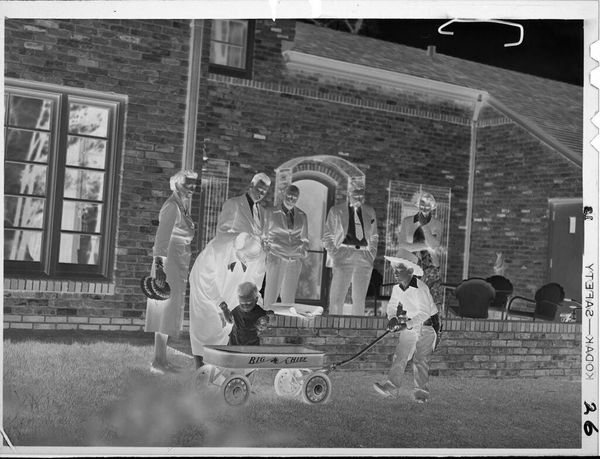
photography, gelatin-silver-print
#
black and white photography
#
street-photography
#
photography
#
black and white
#
gelatin-silver-print
#
monochrome photography
#
monochrome
#
realism
#
monochrome
Dimensions: image: 23.18 × 34.2 cm (9 1/8 × 13 7/16 in.) sheet: 27.94 × 35.24 cm (11 × 13 7/8 in.)
Copyright: National Gallery of Art: CC0 1.0
Curator: Alright, let’s dive into Frank Paulin’s striking gelatin-silver print, "Gas Mask, Lower East Side," which he made sometime after 1956. The scene, a stark monochrome, throws a playful kind of playground into a very unnerving light. Editor: Playful? That's where you start? For me, the overall mood screams dystopian dread. It's all cold geometry and this bizarre sense of displacement with this one figure at its center, a child hidden amid lush undergrowth who is sporting this absurd, oversized mask...it is more disquieting than playful! Curator: I see what you mean, and there’s certainly unease. But there’s a stark juxtaposition at play, isn't there? The innocence of children playing amidst the rather grim subject matter hints at…resilience? Survival, maybe? Editor: Perhaps... but what’s technically intriguing is how Paulin uses the foreground foliage to obscure the subject, complicating the viewer's access and making the narrative deeply unsettling. It makes the simple action of “seeing” this work fraught with hesitation and reluctance to connect, and almost forces an engagement with themes of urban alienation and anxieties surrounding environmental degradation, doesn’t it? Curator: That urban alienation feels very present. The choice of black and white heightens the feeling, too. It strips away the comforting familiarity of colour. We're left with an abstracted, more intensely felt version of reality that also manages to point to this theme of environmental destruction. I almost feel a weird nostalgia when seeing this photo... Editor: Absolutely. In the absence of color, our focus is directed towards texture and light – the granularity of the silver print emphasizing the raw, unpolished truth that underpins Paulin’s approach to the themes of decay, protection and human response. But even the setting plays a role, an era and a landscape, captured without adornment! Curator: I suppose the fact that the image raises more questions than answers is precisely what makes it so compelling all these years later. The stark contrasts create such ambiguity and the result ends up prompting our individual feelings of both worry and safety. Editor: Ultimately, its artistic merit rests on how deftly it manages to intertwine these formal choices to make the viewer uncomfortable as they witness a narrative snapshot. A truly poignant study on the cost of neglect.
Comments
No comments
Be the first to comment and join the conversation on the ultimate creative platform.
